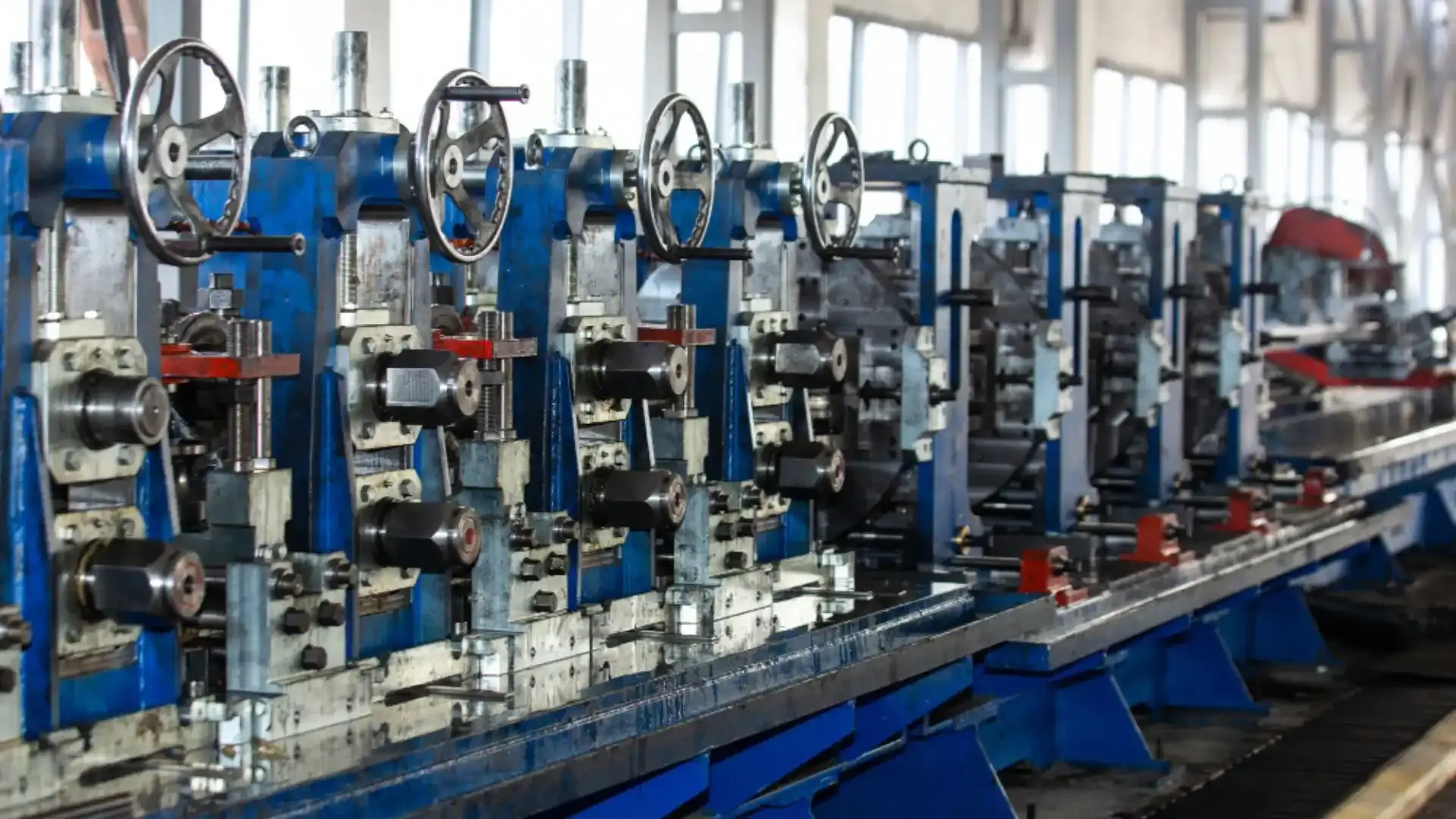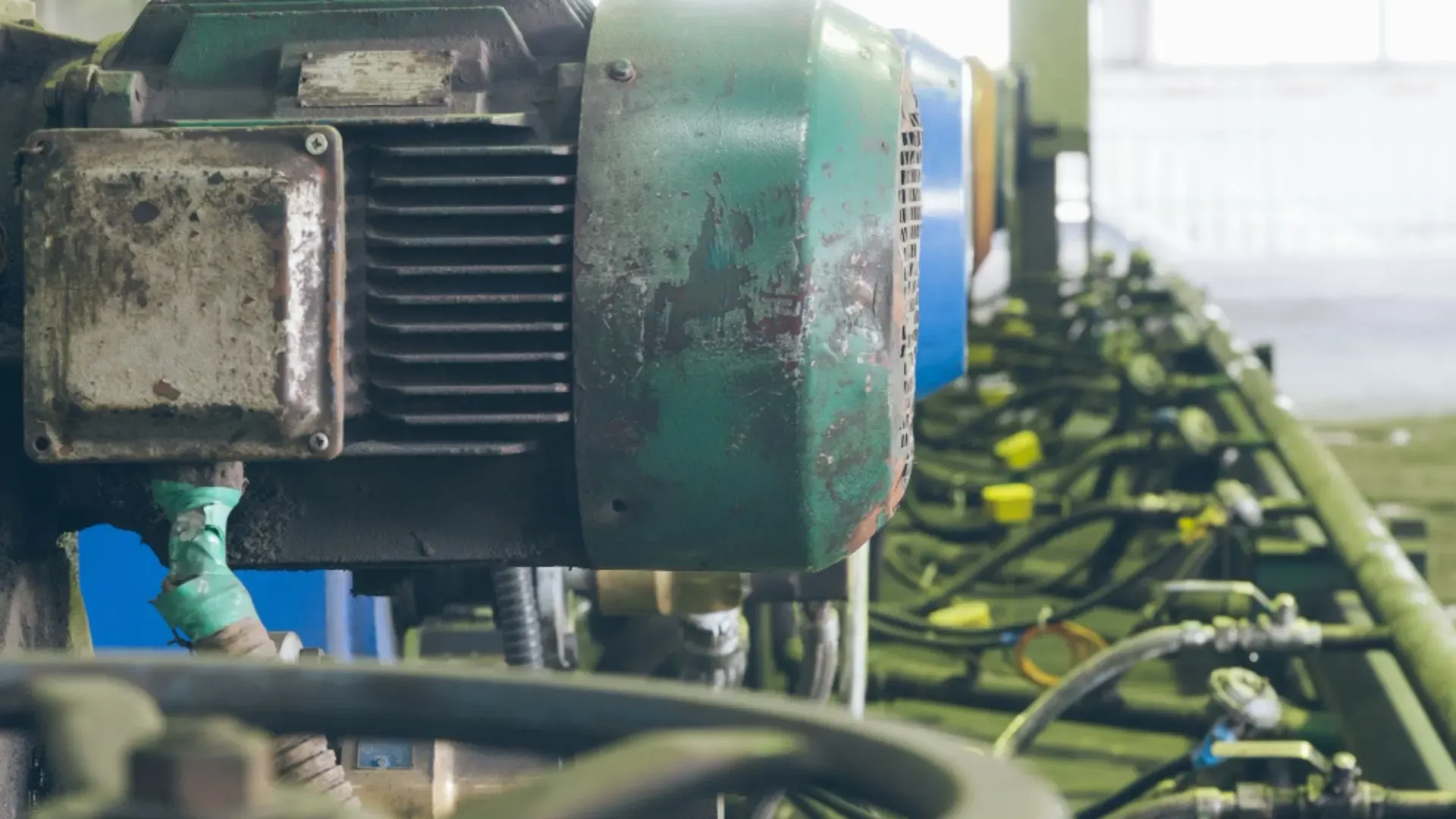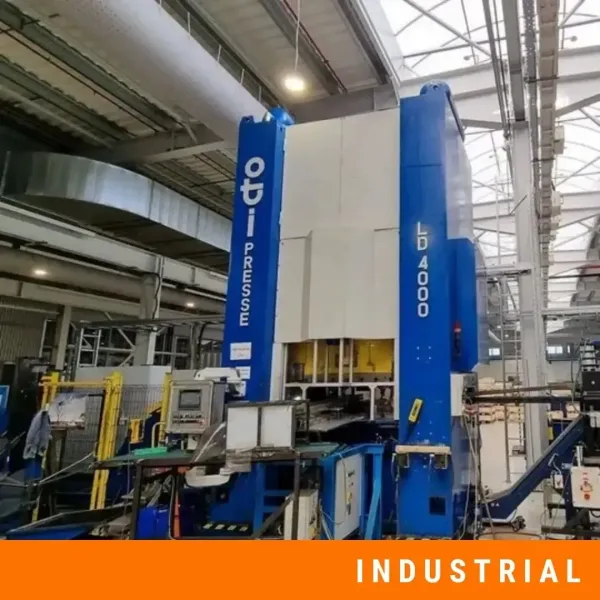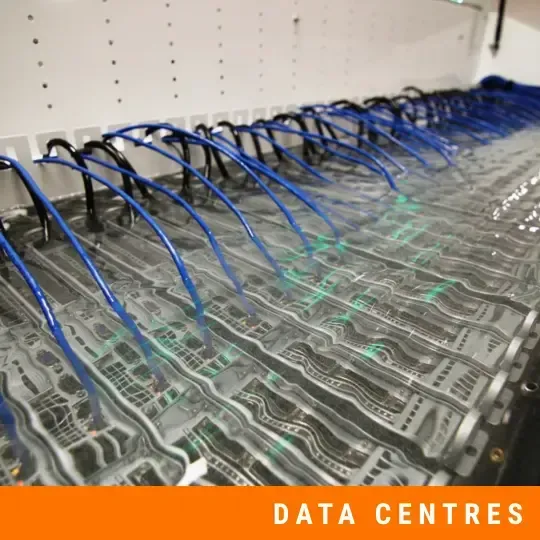Why Mechanical Noise Reduction Is a Smart Engineering Priority
Mechanical noise is often treated as inevitable. As if it is the price of productivity, a by-product of progress. The hum, grind, or rattle of equipment is a warning sign. Noise can signal inefficiency, accelerated wear, or flawed installation. Left unchecked, it impacts not only worker safety but also the performance of industrial equipment and the bottom line.
Understanding and reducing mechanical noise is a form of precision control. With tightening regulations and rising expectations for predictive maintenance, tackling the problem early is both smarter and more sustainable.
Mechanical noise reduction matters. It links directly to equipment longevity. There are measures to avoid it, like anti-vibration mounts and noise mapping. The end goal is a cleaner, quieter, more efficient operation.
Sources of Mechanical Noise: A Breakdown
Every industrial machine produces sound. But when that sound crosses from operational into disruptive, it's often due to mechanical noise caused by specific, correctable issues. To reduce it effectively, one must first understand its origin.
Friction, Resonance, and Imbalance: Core Noise Drivers
At its heart, mechanical noise is generated when moving components interact improperly. This can compromise equipment longevity and increase maintenance frequency. Four primary culprits account for the majority of issues:
- Friction between moving parts. Often, a result of poor lubrication, worn bearings, or insufficient clearance.
- Resonance, where parts of a machine or structure vibrate at their natural frequency, amplifies sound dramatically.
- Imbalance in rotating equipment such as fans, blowers, and pumps causes uneven motion and noise.
- Misalignment of shafts, belts, or motor couplings, leading to high vibration and early component failure.
Structural Transmission: How Noise Travels
Noise is part of every machine, but if mounted inappropriately, the situation can get even worse.. Without proper anti-vibration mounts or decoupling systems, mechanical energy transfers directly into surrounding structures:
- Rigid fasteners can carry vibratory energy into beams, floors, and walls.
- Fixed mounts without dampening allow energy to spread through concrete slabs or metal platforms.
- Poor structural isolation means noise is no longer localised: it becomes a site-wide problem. Potentially affecting operations that have no direct structural connection to the culprit of the noise.
The result? A single misaligned fan or compressor can pollute the sonic environment of an entire factory floor. A single noisy machine may not seem like too much, but it opens the door to inefficiency where other problems might avalanche one after another.

Industry Examples: Where Noise Hides in Plain Sight
Mechanical noise rarely comes from one glaring source. It accumulates subtly and systemically across a site. Some common offenders:
- Compressors with loose internal fittings or outdated isolation pads
- Pumps operating at off-design loads, causing cavitation and vibration
- Conveyors with worn rollers or unbalanced drive systems
- HVAC units transmitting vibration through ducts and support frames
- Gensets, particularly in containerised enclosures, produce low-frequency noise if not isolated properly
Often, these noises are “normalised” until they become unignorable. By which point, the damage may already be done.
The Hidden Cost of Mechanical Noise
Mechanical noise is often dismissed as an unavoidable by-product, but in reality, it’s an acoustic signature of energy loss. When machines generate excess vibration, they’re not operating at full mechanical efficiency.
According to research from ASHRAE and CIBSE, even a 5–10% reduction in fan efficiency caused by imbalance or vibration can lead to energy usage increases of 15% or more, particularly in variable-speed HVAC systems operating across a wide range of loads.
Equipment Wear and Unplanned Downtime
The more your machines vibrate, the faster they age. Vibration-induced fatigue stresses structural joints, shaft bearings, housings, and mounting systems. Over time, this leads to cracks, loosened fasteners, and premature failure of parts.
In high-demand industrial environments, this means more unplanned shutdowns and higher replacement frequency, both of which cost far more than proactive noise and vibration management ever would.
And because vibration often transmits through structural connections, a failure in one part of the system can trigger cascading effects elsewhere.

Human Factors: Fatigue, Stress, and Communication Gaps
High background noise reduces effective verbal communication, masking alarms or instructions, a direct safety risk in any facility where real-time coordination is critical. This degradation in team performance is subtle but powerful, especially over time.
What makes this problem especially insidious is its subtlety. Unlike a broken machine, reduced team performance caused by poor acoustic conditions doesn’t show up in logs or maintenance reports. But it manifests in slower task execution, more frequent errors, and lower morale. If a forklift operator can’t hear a shouted warning or a technician misses an auditory alarm, the consequences can be immediate and serious.
Legal and Compliance Risks
Under the UK Control of Noise at Work Regulations (2005), aligned with EU Directive 2003/10/EC, employers are required to assess and manage noise risks.
If daily exposure levels exceed 80 dB(A), action must be taken. At 85 dB(A), hearing protection is mandatory. And exposure above 87 dB(A) is a hard legal limit. Ignoring these regulations invites regulatory scrutiny, liability, and reputational damage.
Similarly, in the US, OSHA noise standards demand engineering or administrative controls once the 90 dB(A) exposure threshold is reached. Mechanical noise left untreated is a compliance failure waiting to happen.
Design Phase: Get It Right Before It Rattles
Mechanical noise is rarely the result of one faulty component. More often, it’s the consequence of a design process that prioritised carrying capacity, space efficiency, or installation speed without fully accounting for vibration behaviour.
Once the machinery is in place, options for effective noise control shrink dramatically. That’s why the design phase is the single best opportunity to prevent industrial noise pollution from becoming a systemic issue. Getting it right before it rattles is faster, cheaper, and far more sustainable.
The Danger of Designing for Function, Not Vibration
In industrial environments, mechanical layout is often dictated by functionality, access, or space constraints. But when mechanical noise reduction isn’t prioritised during the design phase, structural vibration can become baked into the building itself.

Equipment like compressors, conveyors, or HVAC units is often rigidly mounted onto steel frames, slabs, or mezzanines. Without proper isolation, these structures act as resonant amplifiers, transmitting and even magnifying noise across floors and walls.
The result? A machine that may be acoustically compliant on its own suddenly becomes a source of structure-borne noise affecting multiple zones within the facility. And at this point, retrofitting anti-vibration mounts becomes more expensive, invasive, and far less effective. Also, think of the downtimes.
Component Isolation: The Unsung Hero of Noise Control
Vibration isolation for machinery is foundational. In many design briefs, this aspect is either overlooked or left to late-stage fixes. By decoupling noisy equipment from load-bearing structures using resilient pads, spring mounts, or inertia bases, engineers can significantly reduce transmitted vibration.
The goal is to interrupt the pathway between the vibrating machine and the structure it is attached to. This approach reduces industrial noise pollution and protects the machine from reactive forces that could affect calibration and longevity.
Take a high-speed centrifugal pump as an example. When mounted directly onto a rigid concrete slab without isolation, the pump’s rotational energy sends vibration into the floor, which reflects into the unit. These reflected forces can cause misalignment in the motor shaft, accelerate bearing wear, and throw off flow rates.
Using spring mounts or elastomeric pads to isolate the pump at the base prevents that energy from feeding back into the machine and minimises the structural transmission of noise throughout the facility.
A few strategic isolation examples include:
- Spring isolators for HVAC chillers mounted on rooftops
- Neoprene mounts for internal pump rooms
- Floating floors or inertia bases beneath rotating machinery
Understanding Stiffness, Damping, and Mass Ratios
To effectively reduce vibration at the design stage, you must understand the interplay between stiffness, damping, and mass: the three core elements of any vibration control system.
- Stiffness determines how much a system resists deformation. High stiffness transmits more vibration, while lower stiffness allows for better energy absorption (at the cost of more movement).
- Damping refers to the ability to absorb and dissipate vibrational energy. Too little damping leads to resonance peaks; too much can limit system responsiveness.
- The mass ratio compares the mass of the isolator to that of the equipment. A higher mass ratio generally leads to better isolation. This is why heavy inertia blocks are used to anchor lightweight equipment that would otherwise pass on every pulse.
Prevention Is Cheaper Than a Cure
Retrofitting vibration isolation into an existing system is like trying to fix a foundation once the building is already standing. Expensive, intrusive, and less effective. You may find yourself having to jack up equipment to install isolators beneath active lines, requiring shutdowns and complex lifts.
Or you might be forced to reinforce mezzanine floors that were never designed to resist dynamic loads, significantly increasing material costs and causing workflow disruptions.
In other cases, the solution is to install acoustic barriers or damping cladding. Not because it's the best approach, but because it's the only one still available. These measures rarely fix the root cause. They only muffle its consequences.
Retrofitting Noise Reduction: What Actually Works
It’s best not to reach the retrofitting stage, but if that is your only chance at optimised operations, then there are things you can do. Retrofitting effective mechanical noise reduction solutions is possible in existing industrial facilities where the cost of doing nothing shows up as inefficiency, wear, and non-compliance.
When approached strategically, retrofit solutions can bring real performance gains without disrupting production.
Anti-Vibration Mounts and Pads
One of the most effective interventions is installing anti-vibration mounts or isolation pads like our VIbro EP or DECIBEL SMR beneath noisy machinery. These elements decouple the equipment from the structure, absorbing kinetic energy and reducing structure-borne noise.
For instance, vibration isolation pads made from neoprene or composite elastomers are ideal for lighter machines like small fans, HVAC terminal units, or bench-mounted gear. Heavier machines, such as pumps, generators, or presses, often require spring isolators or inertia bases to handle both load and vibration amplitude.

The key is to choose the right level of deflection based on the machine’s operating frequency and the resonant frequency of the floor or slab. Oversizing or undersizing the isolation system leads to wasted budget and limited effectiveness.
Acoustic Enclosures and Shields
For machines that radiate airborne noise as much as they transmit structure-borne vibration, adding acoustic enclosures or barriers can significantly reduce dB levels in surrounding work areas. Check out our custom solutions.
These enclosures use sound-absorbing insulation on the inside, combined with mass-loaded panels or perforated metal skins on the exterior. They must also be designed to allow for cooling airflow and maintenance access, a detail too often overlooked in poorly executed retrofits.
Mobile acoustic screens can also help isolate intermittent noise sources like portable compressors or welding stations.
Real-World Example: Quieting an Operational Plant
In one UK-based packaging facility, operators reported excessive vibration and sound from a set of ageing conveyor motors running near the QC lab. Shutting down production wasn’t an option.
A retrofit team conducted a vibration survey, identified weak mount points, and installed resilient isolation rails beneath the conveyor line. Within 24 hours, structure-borne noise in the adjacent rooms dropped by 7 dB(A), without interrupting operations.
This kind of success hinges on clear diagnostics, experienced installers, and fast-curing compounds for minimal downtime.
Prioritise What Matters Most
Not every machine needs the same level of treatment. When retrofitting, start with:
- Equipment that runs continuously or near occupied work areas
- Units installed on elevated floors or shared structural elements
- Machines with high unbalanced loads or ageing components
- Locations where occupational noise limits are at risk of being exceeded
Use a noise mapping tool or vibration meter to identify hotspots, then build a prioritisation matrix based on operational hours, exposure risk, and cost-to-benefit ratio. Or request a professional consultation and allow us to help.
Get in touch today and optimise your operations!



